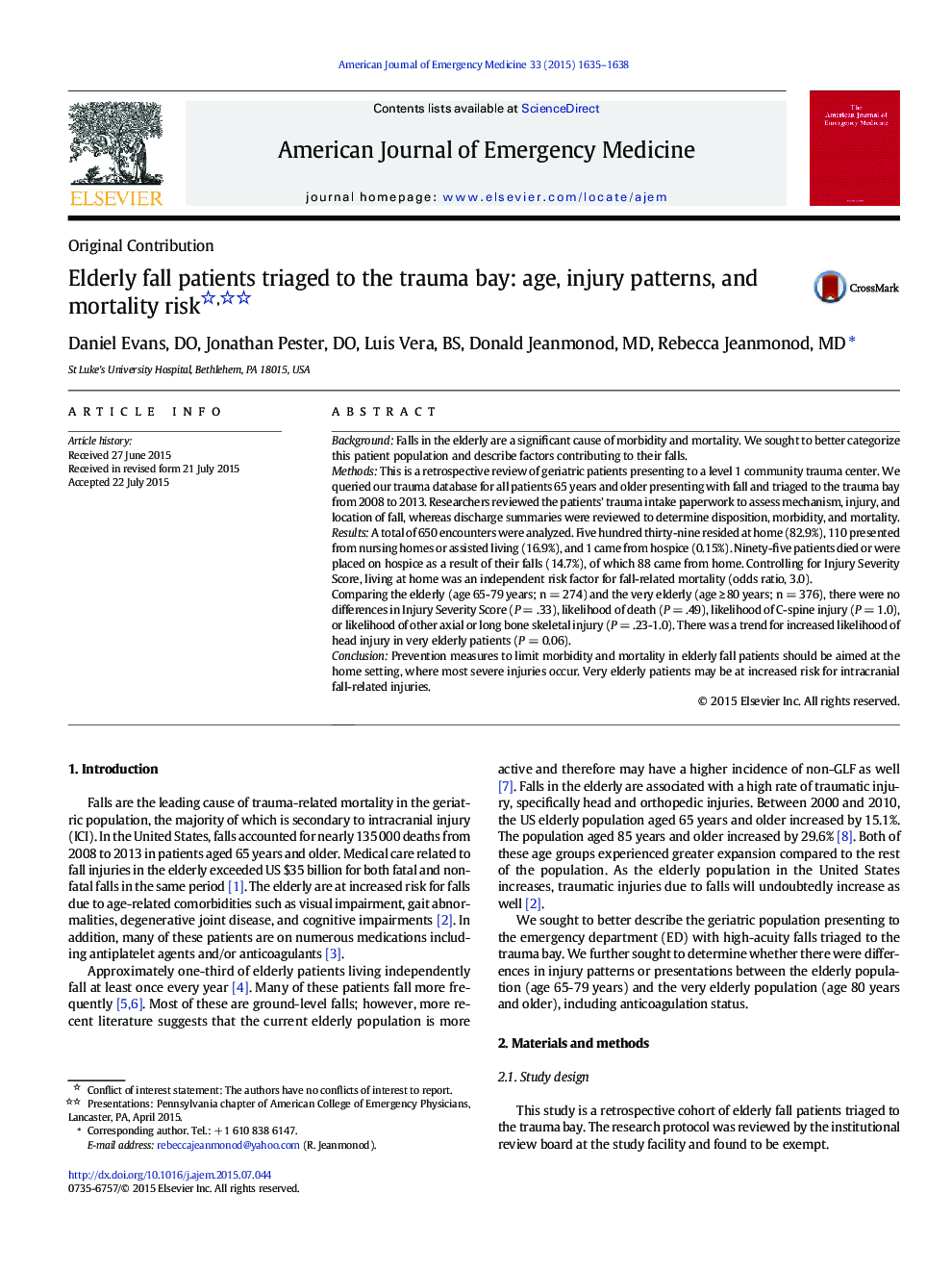| Article ID | Journal | Published Year | Pages | File Type |
|---|---|---|---|---|
| 3223650 | The American Journal of Emergency Medicine | 2015 | 4 Pages |
BackgroundFalls in the elderly are a significant cause of morbidity and mortality. We sought to better categorize this patient population and describe factors contributing to their falls.MethodsThis is a retrospective review of geriatric patients presenting to a level 1 community trauma center. We queried our trauma database for all patients 65 years and older presenting with fall and triaged to the trauma bay from 2008 to 2013. Researchers reviewed the patients' trauma intake paperwork to assess mechanism, injury, and location of fall, whereas discharge summaries were reviewed to determine disposition, morbidity, and mortality.ResultsA total of 650 encounters were analyzed. Five hundred thirty-nine resided at home (82.9%), 110 presented from nursing homes or assisted living (16.9%), and 1 came from hospice (0.15%). Ninety-five patients died or were placed on hospice as a result of their falls (14.7%), of which 88 came from home. Controlling for Injury Severity Score, living at home was an independent risk factor for fall-related mortality (odds ratio, 3.0).Comparing the elderly (age 65-79 years; n = 274) and the very elderly (age ≥ 80 years; n = 376), there were no differences in Injury Severity Score (P = .33), likelihood of death (P = .49), likelihood of C-spine injury (P = 1.0), or likelihood of other axial or long bone skeletal injury (P = .23-1.0). There was a trend for increased likelihood of head injury in very elderly patients (P = 0.06).ConclusionPrevention measures to limit morbidity and mortality in elderly fall patients should be aimed at the home setting, where most severe injuries occur. Very elderly patients may be at increased risk for intracranial fall-related injuries.
